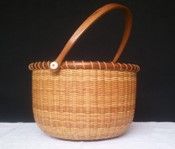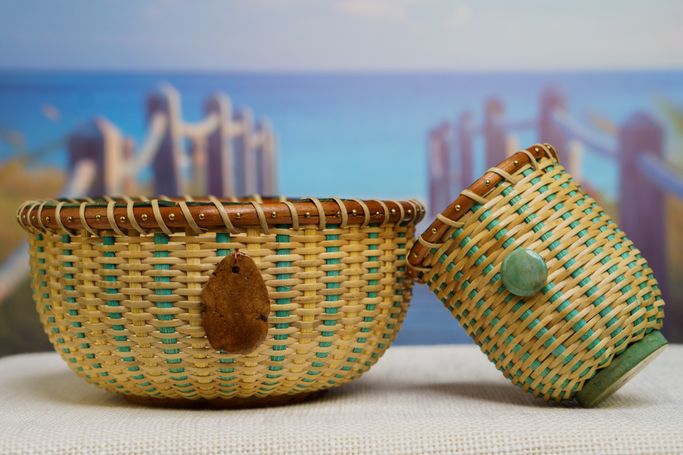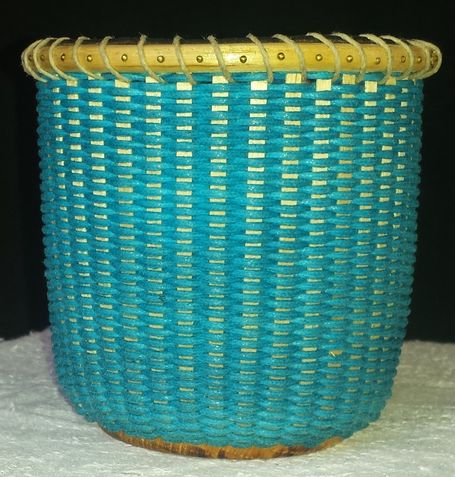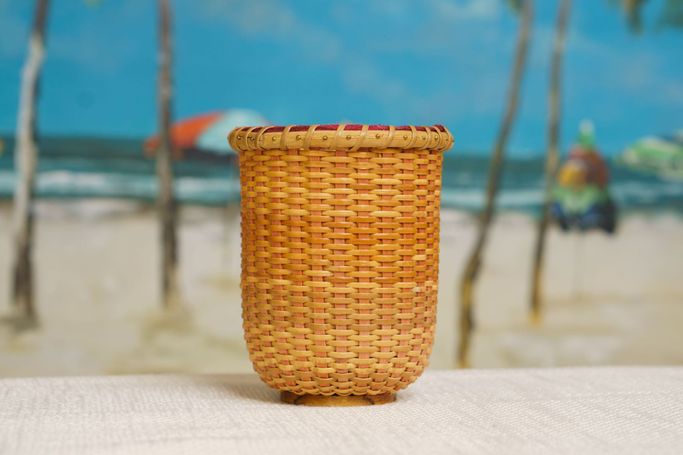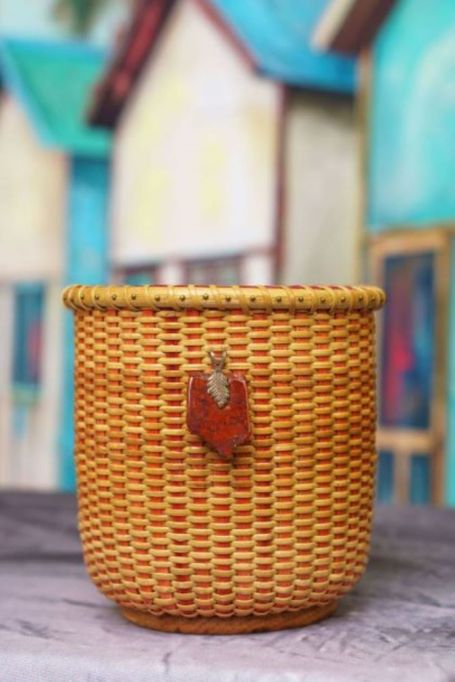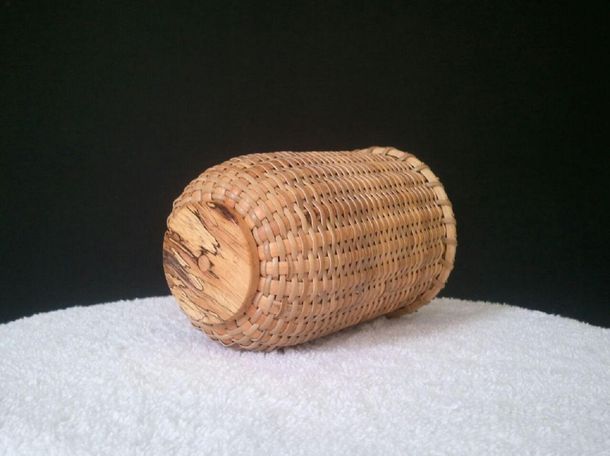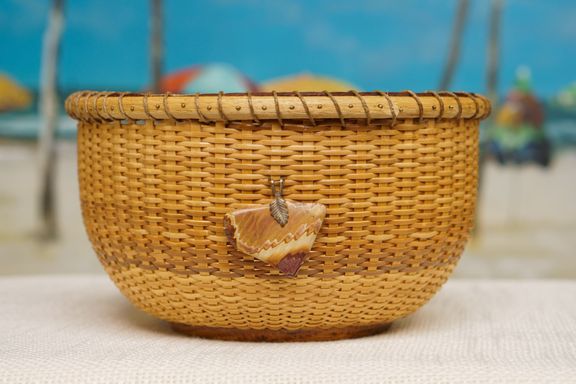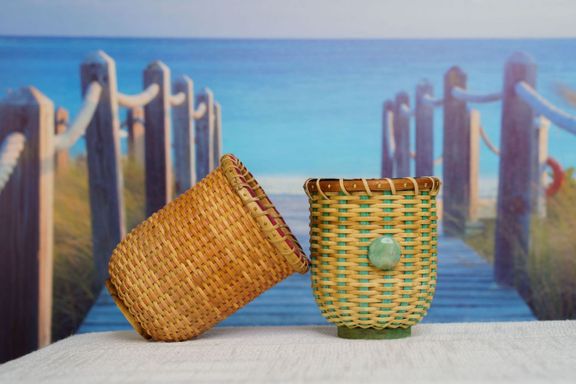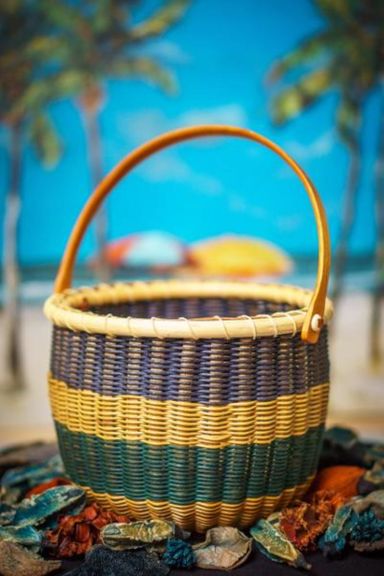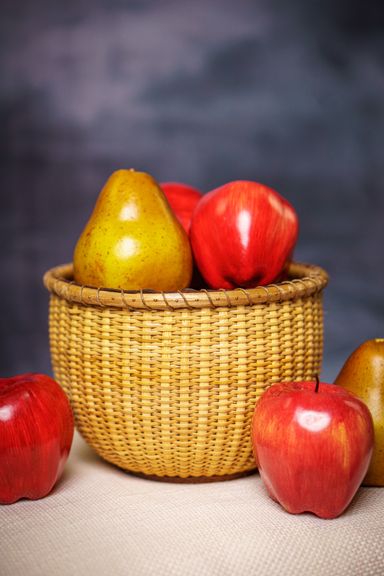History
History of the Nantucket Lightship Basket

In the 1830's, the whaling industry started to flourish, and ships sailed further and further from their home ports. When ships sailed into the Pacific rim, they brought back a material used for basket construction by local natives, namely, rattan. Rattan is a long vine-like plant that looks much like bamboo except that it has a solid core. From this long vine, locals would cut the outer bark off in long strips and use this strong yet pliable material for many things including basketry.
Another element includes the use of solid wooden bottoms, either North American hardwoods or exotic woods sailors might find in their travels. Baskets are woven over wooden molds which, all in combination, together with a keen sense of artistic craftsmanship, give Lightship baskets their unique character.
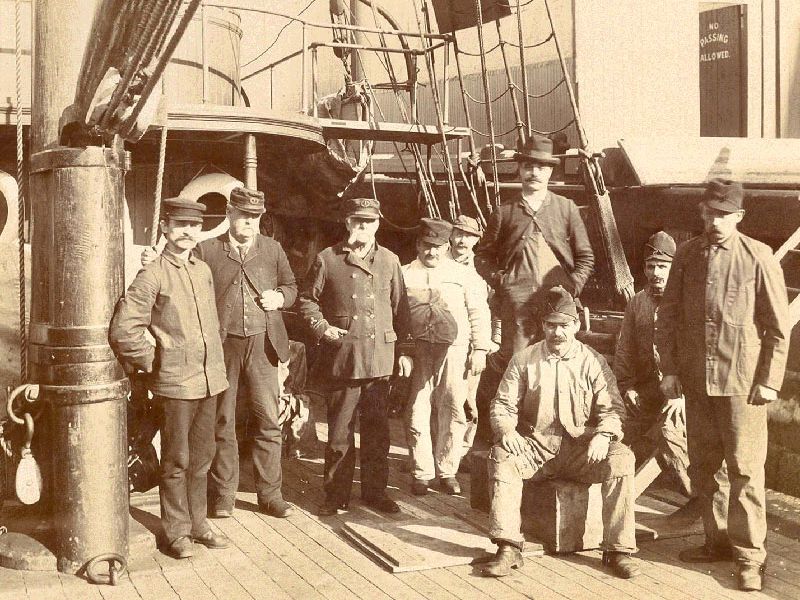
North American hardwoods or exotic woods which lightship sailors might have received from whalers or clipper ship returning from the Orient. Baskets are woven over wooden molds which, all in combination, together with a keen sense of artistic craftsmanship, give Lightship baskets their unique character.
In 1856, when the first Lightship was commissioned to warn ships of the dangerous shoals of the southern shores of Nantucket, many of the sailors took basket making materials with them to provide a break from the long hours of boredom. It is from this era that the baskets received their name and reached a state of refinement that have caused them to be widely sought after.
In 1945, Jose Reyes came to Nantucket to vacation and soon decided to stay. From his home in the Philippines he brought a working knowledge of rattan, and a sense of imagination that led him to create the "friendship basket" or handbag, possibly the most recognized and popular forms of this art. It is from this tradition of craftsmanship, creativity, and ingenuity, that today's weavers draw upon to create their own personal expression of the Nantucket Lightship Basket.
I weave in the traditional style (round and without lids), using cane or ash staves and reed or pounded ash weavers, sometimes incorporating waxed string, hemp, or leather, and using North American hardwoods like oak, maple, cherry or walnut or exotic woods including ebony and tamarind. My baskets are trimmed in leather and feature brass nails. Baskets can be decorative, functional or both.
